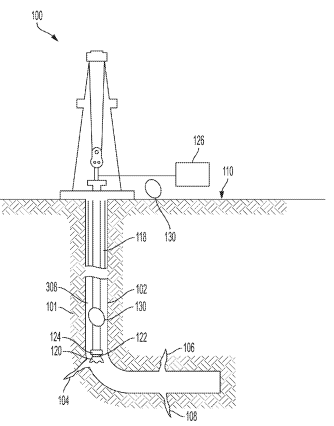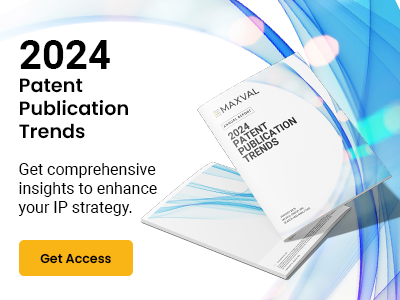This week’s newest patent applications from Halliburton Energy Services, Novartis, Abbott, Boston Scientific, Merck, Medtronic, Roche, PayPal, Intel, Apple, Microsoft, and IBM. Apple files a patent for transit navigation for wearable devices. This new development could revolutionize how we make our journey from one place to another!
Halliburton Energy Services Pursues a Patent on a Dynamic Multi-Well Operation Integration in Wellbore Drilling
U.S. patent application, US20220145746, discloses a method of receiving real-time data from one or more sensors about one or more active wellbore operations. The real-time data is combined with historical data about previously completed wellbore drilling operations, and associated with performance attributes to generate a blended set. Additionally, identification of criteria of focus, types of parameters for optimization, and operation groupings for the blended data set is received. Further, the criteria of focus, types of parameters for optimization, and operation groupings for the data are applied to the blended data set to determine an adjustment for an active wellbore drilling operation of interest.
Novartis Seeks to Patent Lentiviral Transfer Vectors
U.S. patent application, US20220145326, relates to lentiviral transfer vectors for expressing a heterologous nucleic acid sequence into a cell, such as a 293T cell, a Jurkat T cell, or a primary human T cell. The vector includes a cytomegalovirus (CMV) promoter, an EF1alpha promoter, an INS1 inhibitory sequence, a cPPT sequence, and a hepatitis B PRE with a mutation in the start codon of X protein ORF.
Abbott Wants to Patent a Compression Device for Closing Tissue Openings
U.S. patent application, US20220142646, discloses a tissue closure device for reducing the need for hospital staff to apply manual compression to a tissue opening. The device includes a compression support frame, compression support mounted on the frame, and a tension member selectively slidable in relation to the support. The figures below illustrate the configuration of the compression device for closing a tissue opening a vein or an artery.
Boston Scientific Files a Patent for a Rotational Medical Device
U.S. patent application, US20220142667, relates to an atherectomy system configured to engage and remove plaque from walls in vessels of a vascular system. The device includes a rotational tip coupled to the end of a drive shaft, a motor to rotate the rotational tip, and a controller that facilitates passing an occlusion in the vasculature of a patient. The figure below illustrates an atherectomy system.
Merck Aims to Patent a Novel Sampling Method for Long-Term Monitoring of Microbes
U.S. patent application, US20220145369, relates to the sterile carriers and further parts like instructions to be used for long-term monitoring of microbes. The method comprises the steps of providing pieces of sterile and nucleotide-free adhesive fibrous material, affixing the fibrous material to a surface, collecting pieces of the fibrous material from the surface, incubating pieces of the fibrous material in a solvent, and analyzing the solvent for the presence of biological contaminants.
Medtronic Eyes a Patent for a Remotely Activated Cannula Insertion
U.S. patent application, US20220143305, discloses an infusion device for delivering medication to a body by a remote computing device. The device includes an insertion assembly comprising a cannula, a medicament reservoir, and a trigger assembly to trigger the insertion of the cannula into a user in response to a command from a remote computing device. The figure below illustrates an infusion device.
Roche Aims to Patent Oligonucleotides for Inducing Paternal Ube3a Expression
U.S. patent application, US20220146496, discloses an oligonucleotide for inducing the expression of ubiquitin-protein ligase E3A (UBE3A). The oligonucleotides target the suppressor of the UBE3A paternal allele by hybridization to SNHG14 long non-coding RNA downstream of SNORD109B and the composition is used for the treatment of Angelman syndrome.
With the Ricoh biometric information display device, you can control your data securely and seamlessly. This device allows for easy access to critical information with a single touch of the finger, making it perfect for business use.
PayPal Eyes a Patent for a QR Code Initiative: Checkout
U.S. patent application, US20220147966, discloses a method for employing enhanced, transaction-based quick response (QR) codes for improved privacy and fraud detection. The method includes leveraging a smart device to securely transfer electronic payment information from a buyer to a merchant upon receiving context data characterizing a transaction facilitated by a point-of-sale device, generating the QR code based on the context data and financial instrument data, and visually rendering the QR code on an electronic display, such that the QR code is scannable by the point-of-sale device.
Intel Files a Patent for Dynamically Enabling Tiling in 3D Workloads
U.S. patent application, US20220148261, describes a method for dynamically enabling tiling in 3D workloads based on determining the size of a graphics primitive, rendering pixels associated with the graphics primitive on a per tile basis if the size exceeds a threshold, and establishing the visual appearance of pixels representing the application on a display screen. The figure below illustrates rendering pixels and enabling tiling in 3D workloads.
Apple Eyes a Patent for Transit Navigation
U.S. patent application, US20220146271, discloses a method of transit navigation for a wearable device. The method includes obtaining, by the wearable, a transit route from a starting location to a destination location, presenting a first navigation instruction describing a first navigation maneuver of the plurality of transit navigation maneuvers on a display, detecting manipulation of a physical input physically integrated into the wearable and presenting a second navigation instruction describing a second navigation maneuver on the display. The figure below illustrates the transit navigation presentation on the wearable device.
Microsoft Aims to Patent a Method for Enhancing a Link in Collaboration Applications
U.S. patent application, US20220147696, discloses a method for enhancing a link in a collaboration application. The method includes determining a URL from a content entered into the collaboration application, automatically calling a web service to obtain a representation of content referenced by the URL, and receiving the representation of the content in a format customized for the collaboration application. The figure below illustrates an URL enhancer for a notebook application implemented on a mobile device having a web browser client.
IBM Wants to Patent a Method for Generating Power Using an Electronic Cloth
U.S. patent application, US20220149713, discloses a method for generating power using electronic cloth. The method includes generating power from the movement of metal coils, applied as a tattoo to a user’s skin, relative to the cloth containing electronic threads, and transferring the generated power to a device. The figure below depicts the electronic cloth generating power for a smart wearable device.













